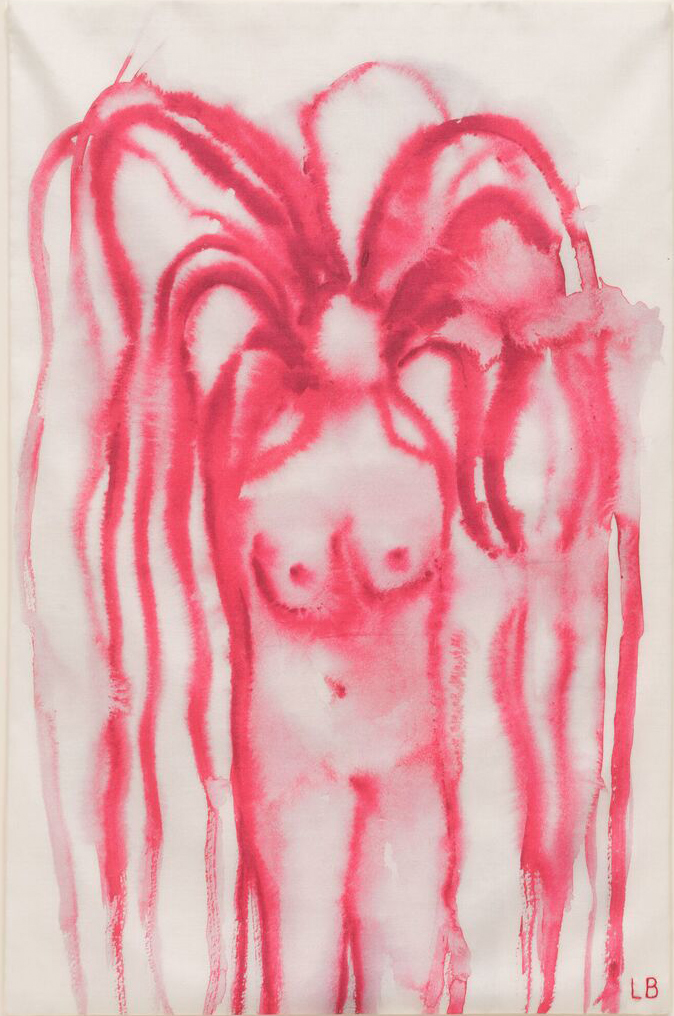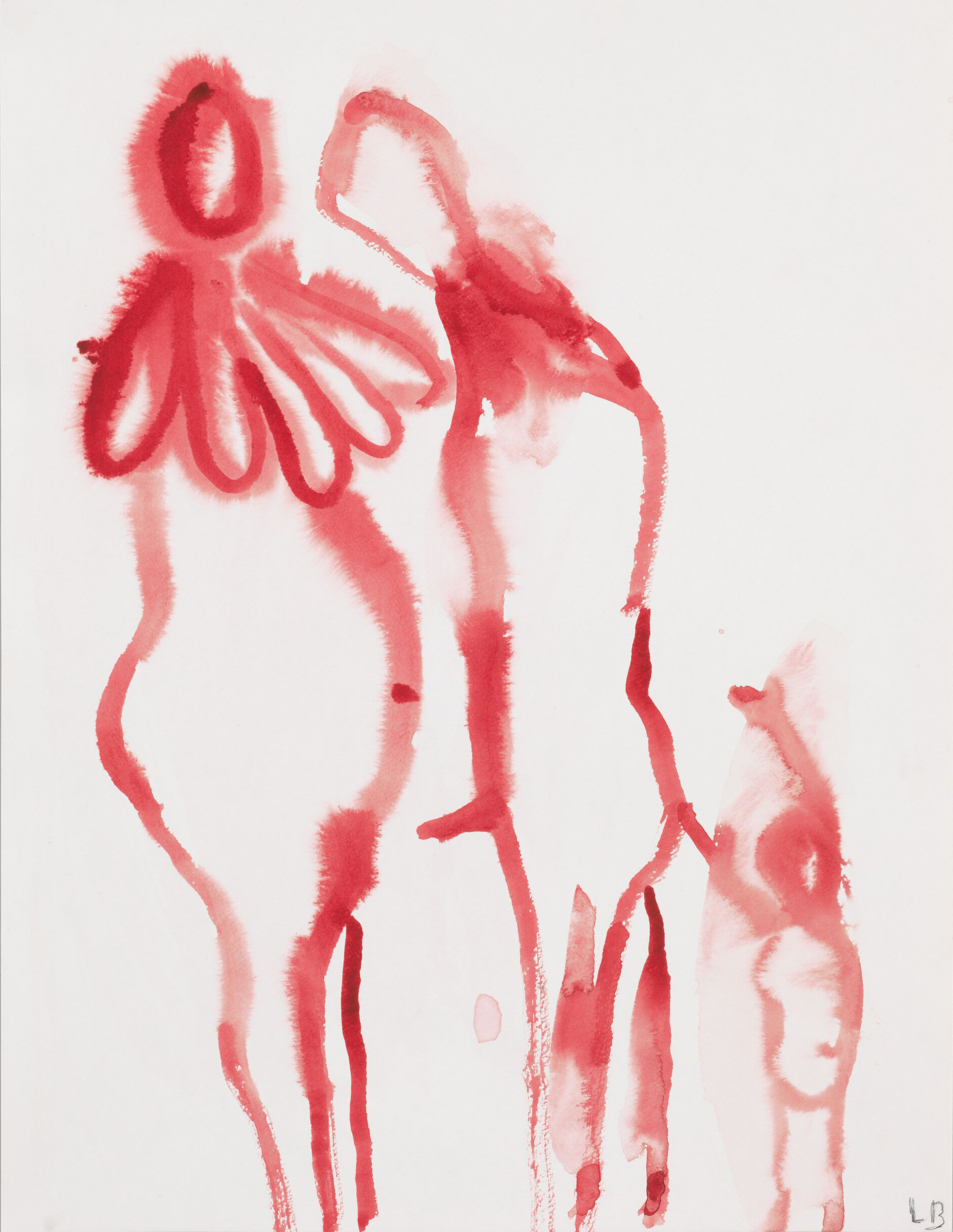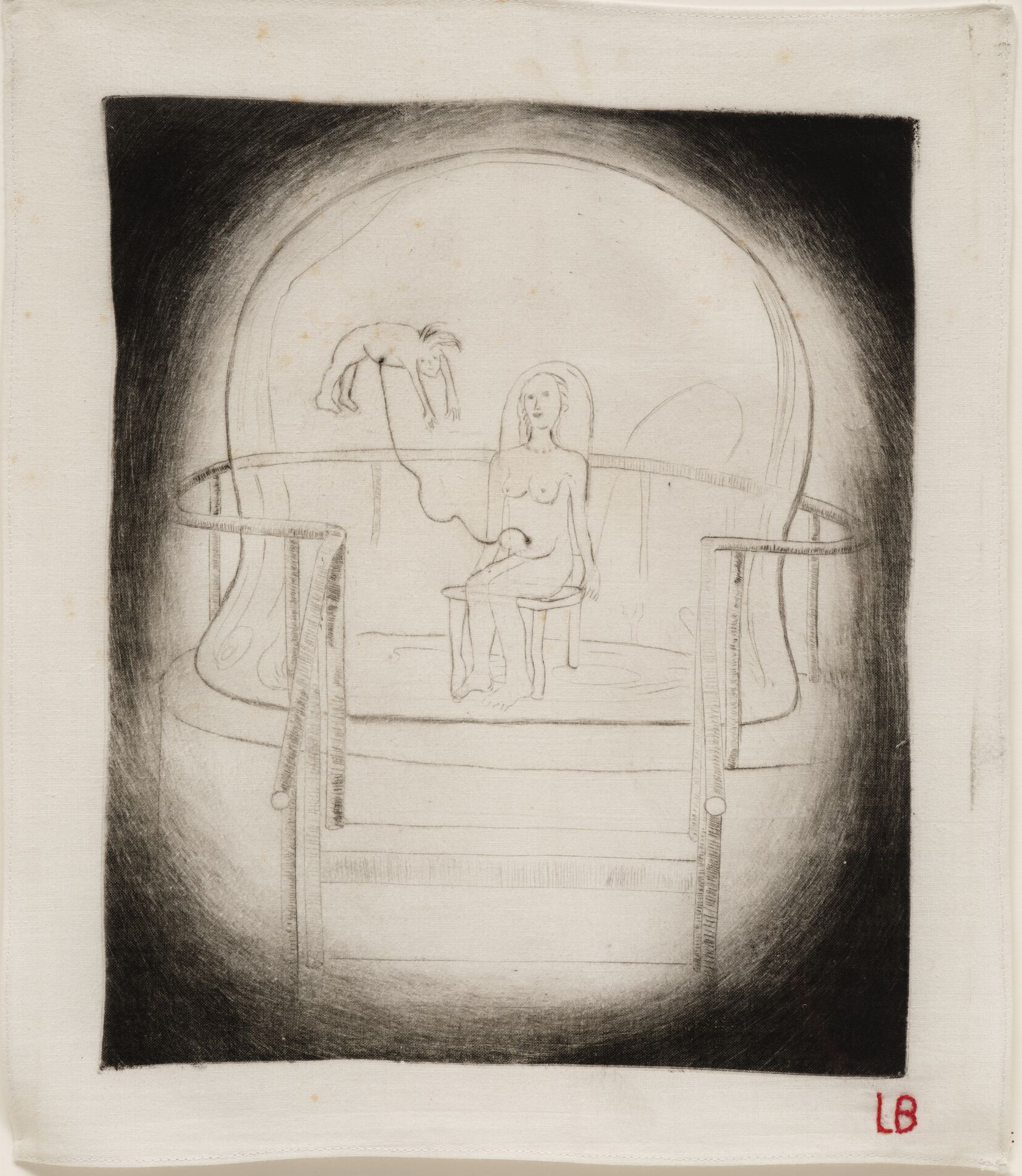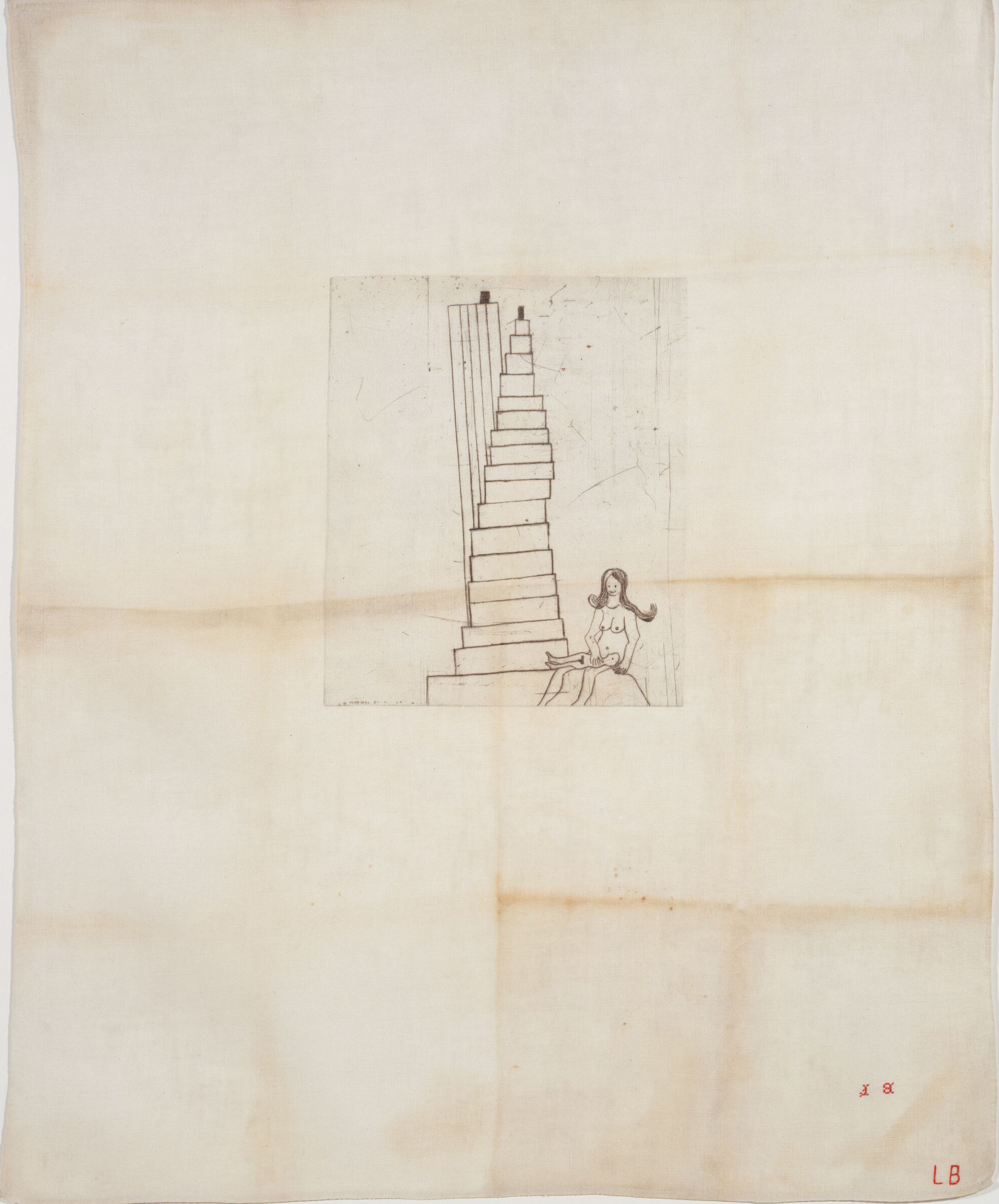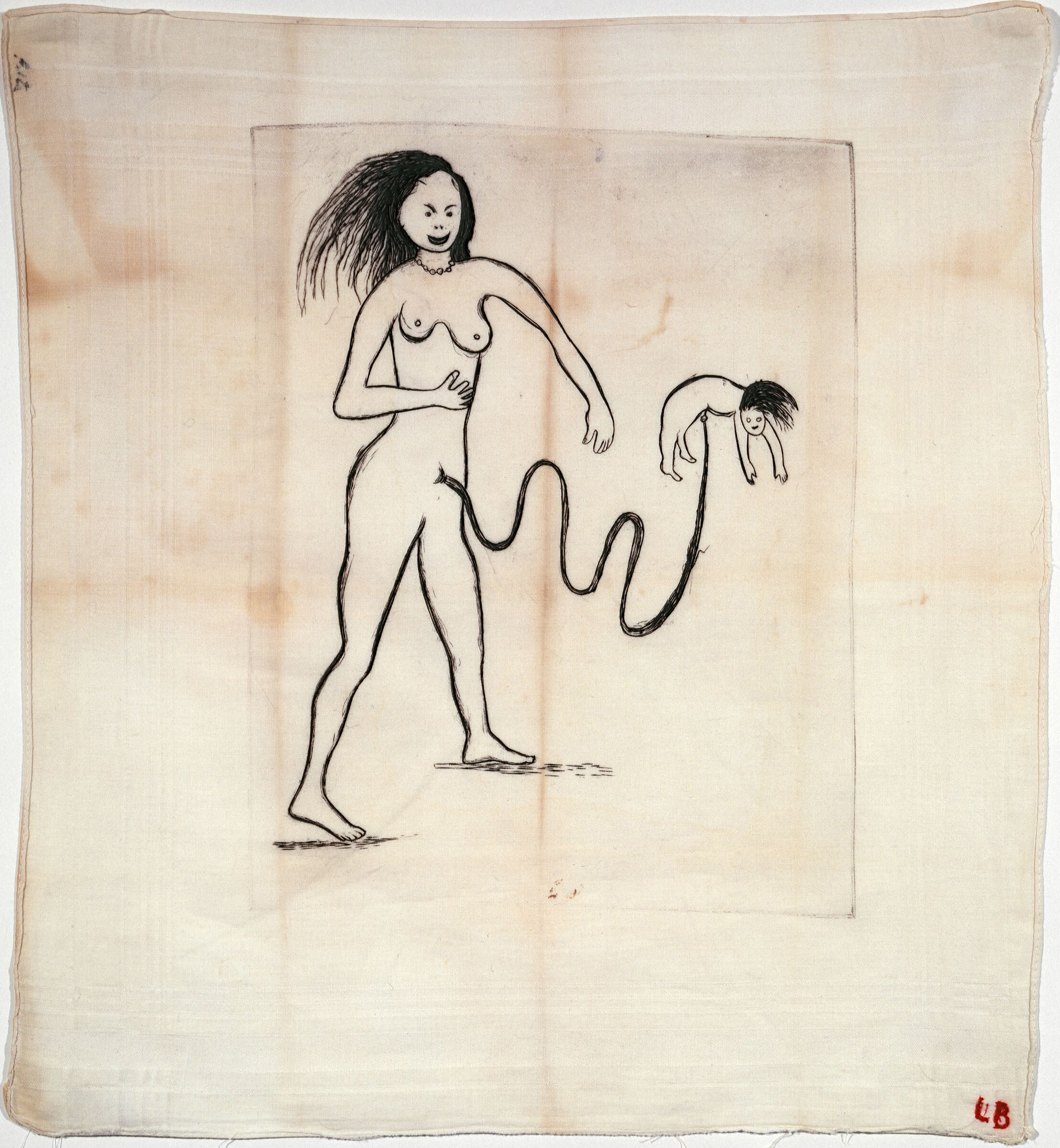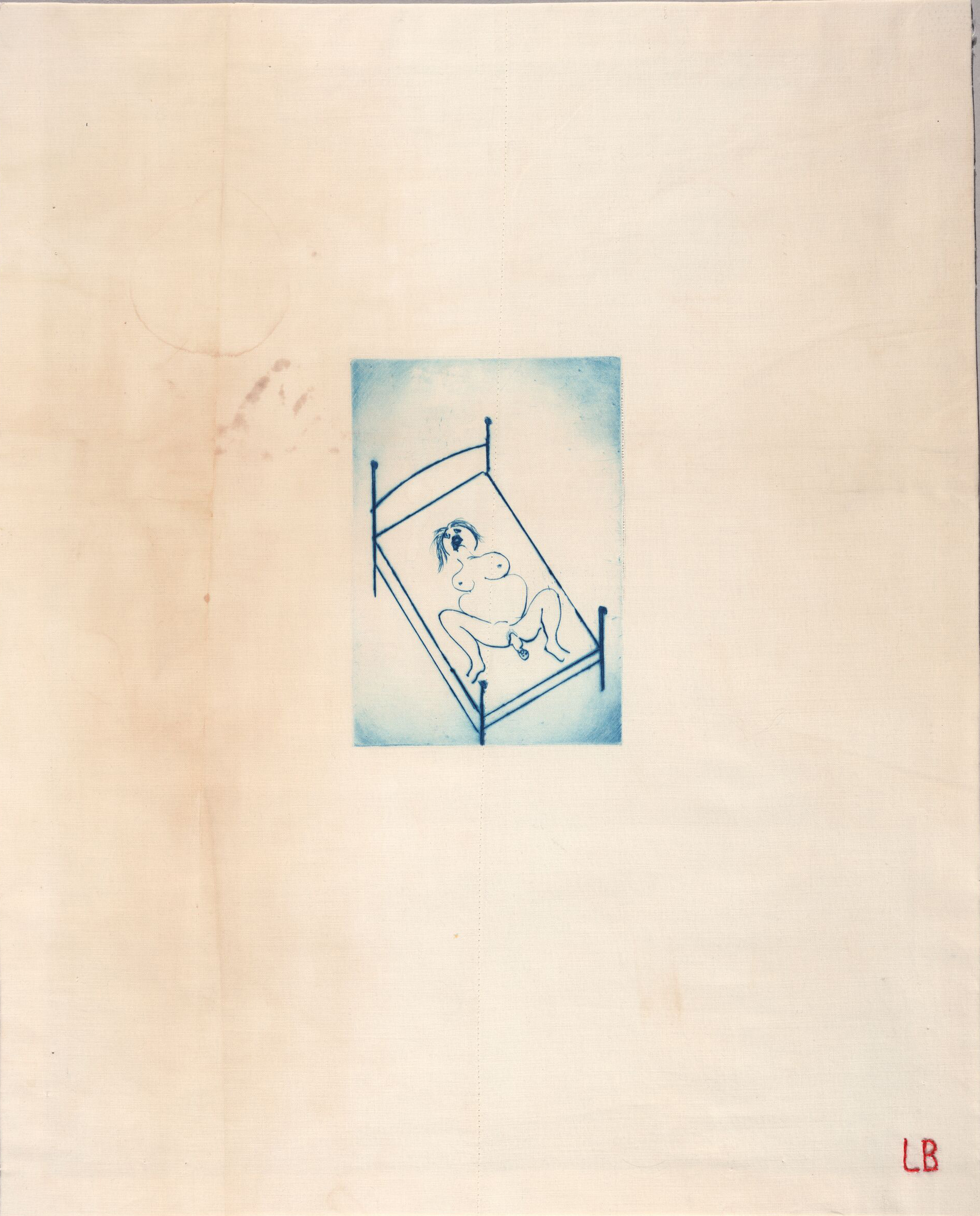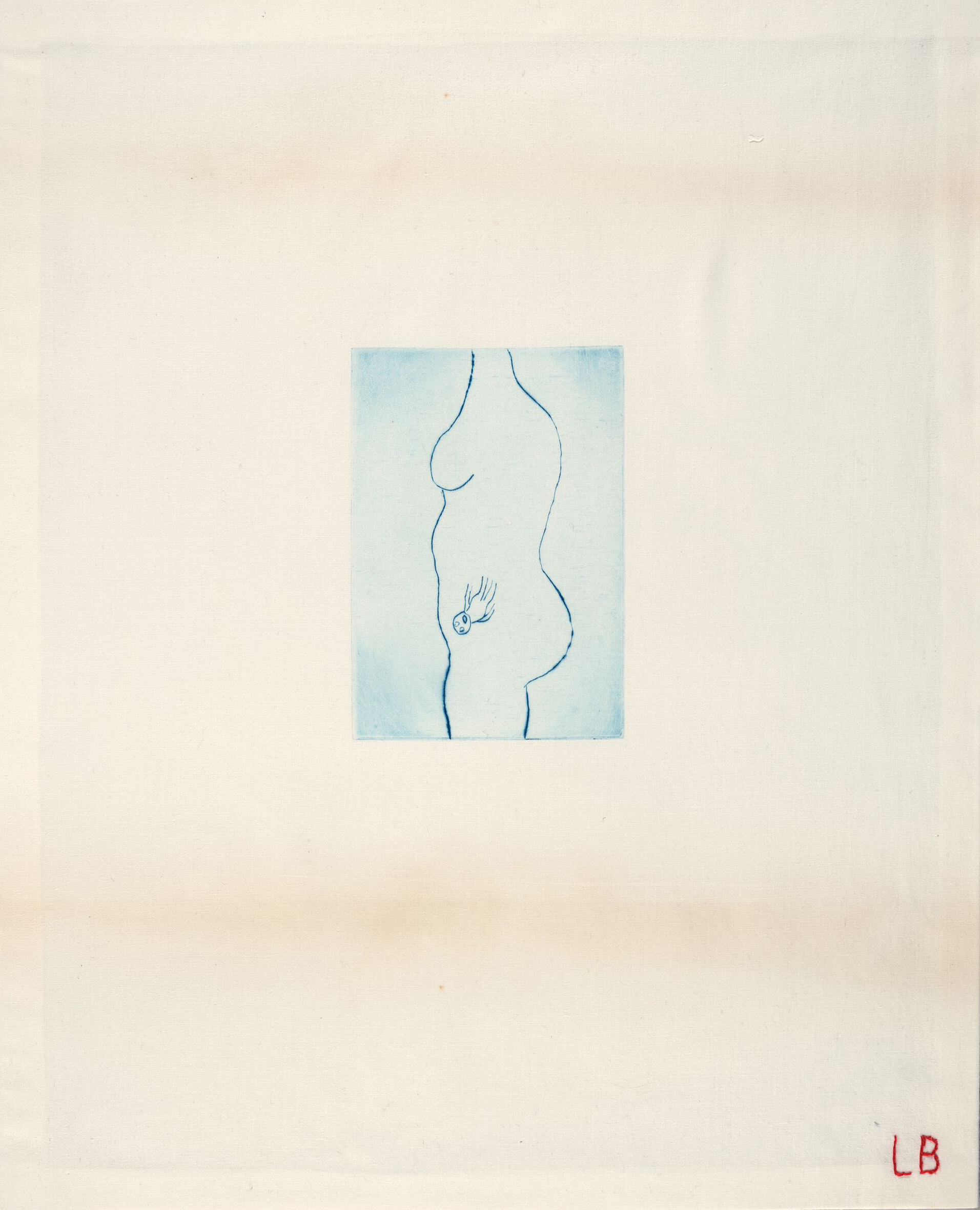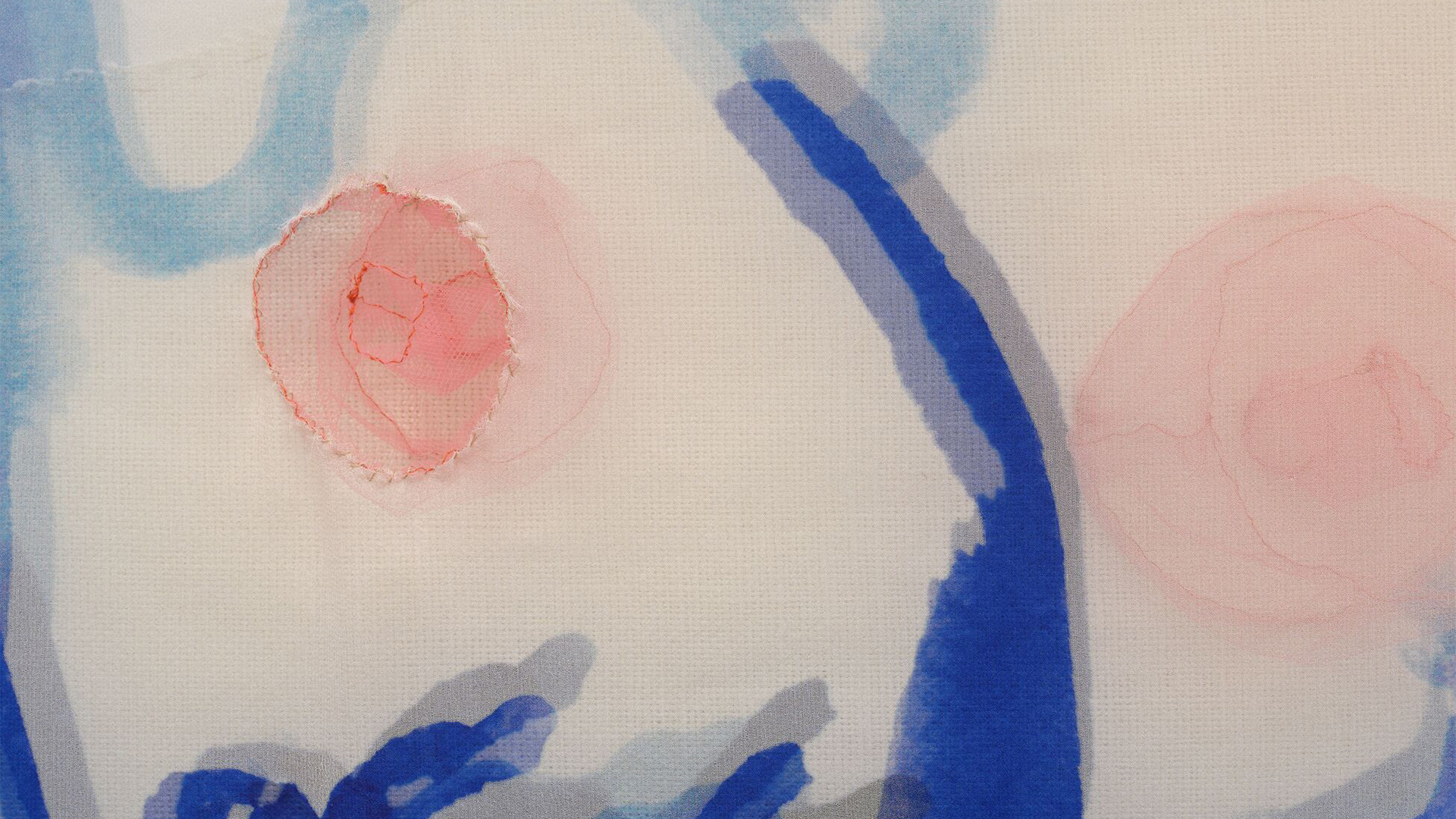
LOUISE BOURGEOIS
ONCE THERE WAS A MOTHER
8 September – 23 December 2023
NEW YORK, 18TH STREET
Celebrated for large-scale sculpture and installation art, Bourgeois was also an inventive and prolific printmaker, especially during the last decade of her life. Centered around one of her most powerful themes—motherhood and maternity—the exhibition places Bourgeois’s printed works in relation to sculptures and drawings to highlight the essential role printmaking played within her multifaceted practice.

‘Once there was a mother’ takes its title from Plate 9 of Bourgeois’s 1947 illustrated book ‘He Disappeared into Complete Silence,’ which pairs nine engravings with short texts she called parables. These stories and their accompanying images of isolated buildings convey a sense of loneliness, alienation and lack of communication. They also show Bourgeois’s fascination with the architecture of her adopted city, New York, where she lived and worked from 1938 until her death in 2010. In the parable which accompanies Plate 9, a son ultimately rejects his devoted mother despite her best efforts to protect him. Bourgeois wrote this in the mid-1940s, while raising three young sons.
He Disappeared into Complete Silence (plate 9), 1947–2005, Illustrated book with 11 engravings over photogravure, some with watercolor additions, and letterpress text
Explore the exhibition
Most of the printed works in the exhibition were made during the last decade of Bourgeois’s life, when images of maternity—pregnancy, childbirth and breastfeeding—came to the fore. Although already in her nineties at the time of their creation, the prints reveal Bourgeois to be exceptionally active and innovative, experimenting with a variety of techniques, adding hand-applied details, and printing on the old garments and household fabric she had saved throughout her long life.

Like pages of a diary, this material evoked memories of people and events from Bourgeois’s past and was also used extensively in her sculptural work as she increasingly identified with her mother, a tapestry weaver and restorer. Her longtime printer, Felix Harlan, established a printing process in which the various fabrics could take as rich an impression as paper. During this period, Bourgeois also began working closely with noted New York publisher and gallerist Carolina Nitsch, who encouraged her interest in making editioned prints with unique elements, including archival dyes, collage and digital processes.
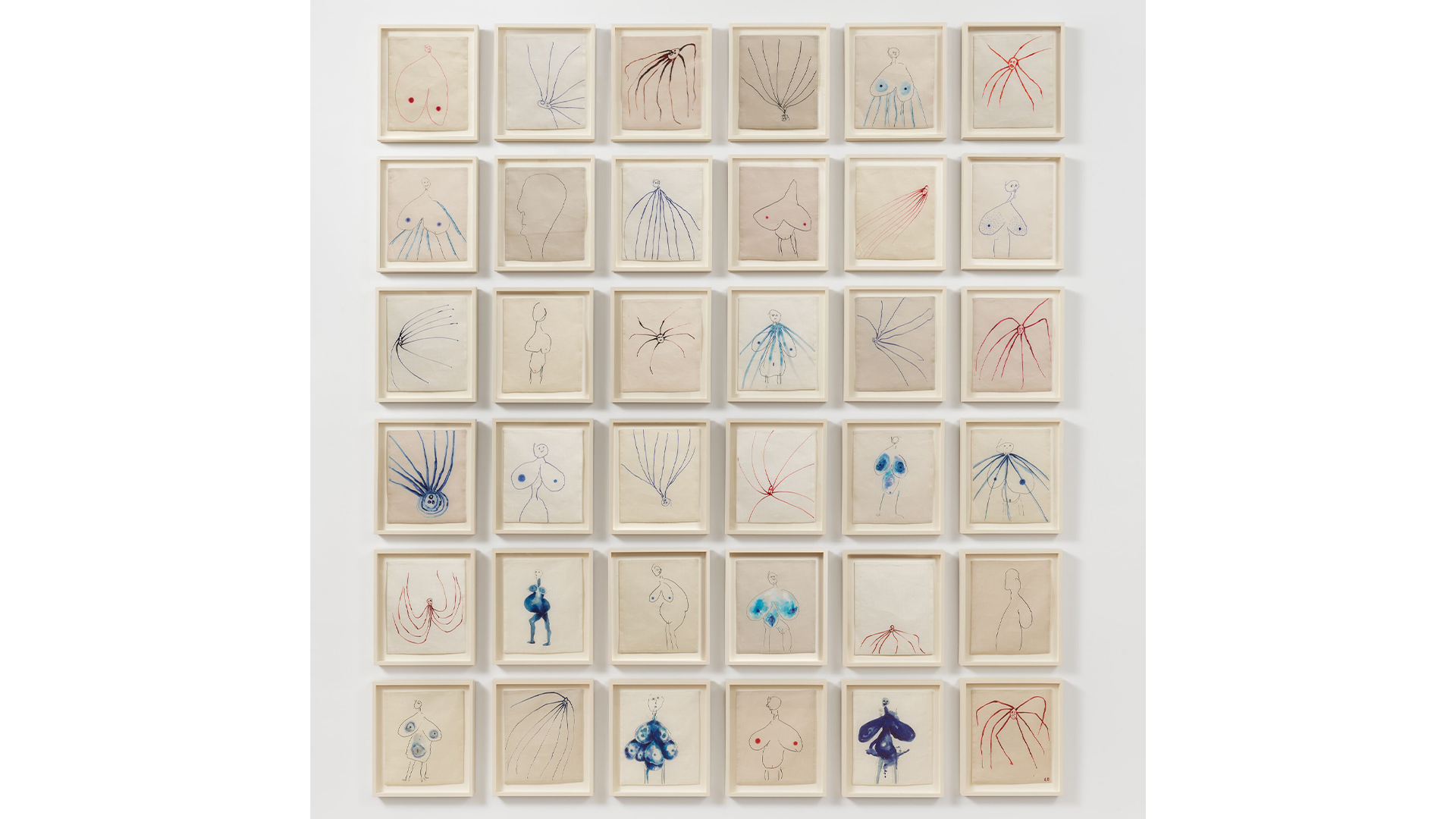
The Fragile
2007
Digital prints on fabric, some with dye additions, suite of 36
Overall: 246.4 x 215.9 x 3.8 cm / 97 x 85 x 1 ½ in
Each frame: 36.8 x 31.8 x 3.8 / 14 ½ x 12 ½ x 1 ½ in
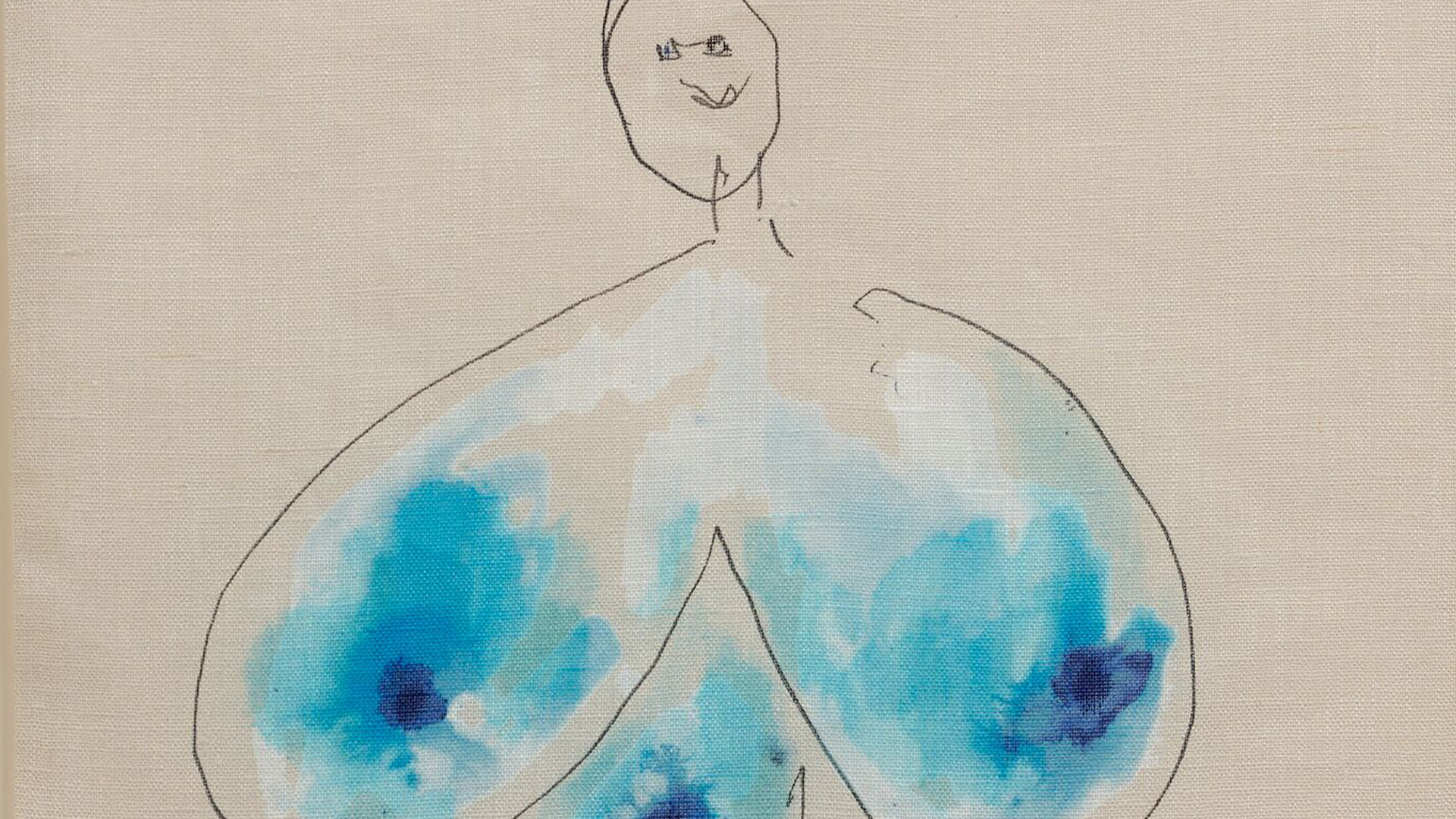
Printmaking afforded Bourgeois the possibility of taking an image or theme and experimenting with it across different variations and permutations. ‘The Fragile’ (2007) is an edition of seven individual sets of thirty-six prints on fabric, each with distinct elements and hand-applied archival dyes. The work is an expression of Bourgeois’s feelings of physical and psychological frailty in her old age, and her ensuing identification with the infant child.

One of the exhibition’s only completely unique printed works is ‘Self Portrait’ (2009). Composed on an old bedspread embroidered with the initials ‘L.B.,’ this work was made a year before the artist’s death and depicts a 24-hour clock with hands positioned at the hours 19 and 11—which together form the year of Bourgeois’s birth. Twenty-four individual drypoint prints are collaged and stitched at every hour, with each print illustrating an important event from the artist’s life. The image at hour 24 resembles ‘Maman,’ the monumental spider Bourgeois saw as a symbol for her mother and as analog for her own artistic practice.


On view at New York, 18th Street
Hauser & Wirth’s West Chelsea location is the gallery’s first dedicated space for Editions. Anchored by the Hauser & Wirth Publishers flagship bookstore, the historic building is also a hub for Learning initiatives, Public Programs and more.
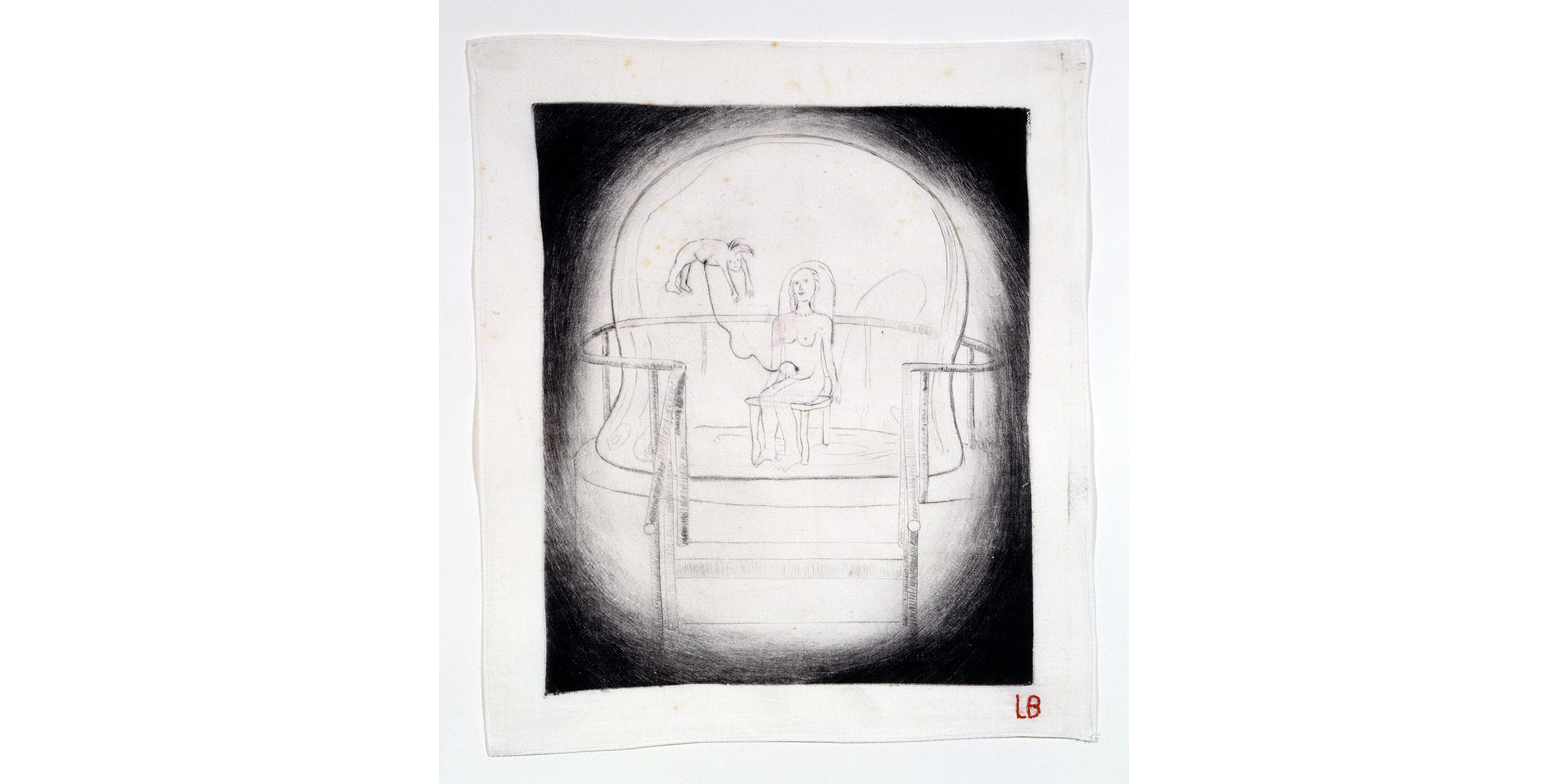
Tuesday 19 Sep, 2023 5:30 pm
In Conversation: Felix Harlan & Maggie Wright on Louise Bourgeois
Printmaker Felix Harlan & Maggie Wright on ‘Louise Bourgeois. Once there was a mother’
On the occasion of the exhibition ‘Louise Bourgeois. Once there was a mother’ at Hauser & Wirth’s newly dedicated Editions space, please join us for a talk about the artist and her printmaking practice with Harlan & Weaver’s Felix Harlan and The Easton Foundation’s Maggie Wright.
Related Content
About the Artist
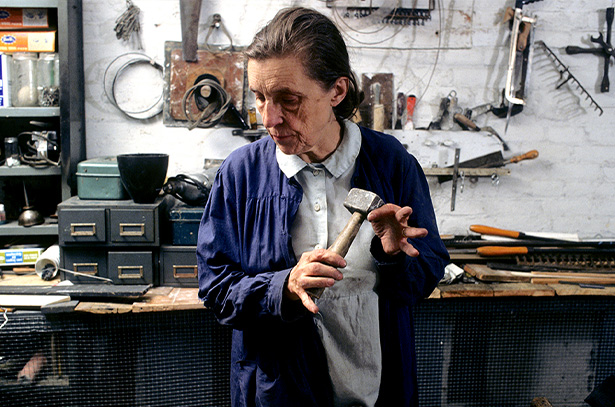
Louise Bourgeois
Born in France in 1911, and working in America from 1938 until her death in 2010, Louise Bourgeois is recognized as one of the most important and influential artists of our time. For over seven decades, Bourgeois’s creative process was fueled by an introspective reality, often rooted in cathartic re-visitations of early childhood trauma and frank examinations of female sexuality. Articulated by recurrent motifs (including body parts, houses and spiders), personal symbolism and psychological release, the conceptual and stylistic complexity of Bourgeois’s oeuvre—employing a variety of genres, media and materials—plays upon the powers of association, memory, fantasy, and fear.
Bourgeois’s work is inextricably entwined with her life and experiences: fathoming the depths of emotion and psychology across two- and three-dimensional planes of expression. ‘Art,’ as she once remarked in an interview, ‘is the experience, the re-experience of a trauma.’ Arising from distinct and highly individualized processes of conceptualization, Bourgeois's multiplicity of forms and materials enact a perpetual play: at once embedding and conjuring emotions, only to dispel and disperse their psychological grasp. Employing motifs, dramatic colors, dense skeins of thread, and vast variety of media, Bourgeois's distinctive symbolic code enmeshes the complexities of the human experience and individual introspection.
Rather than pursuing formalist concerns for their own sake, Bourgeois endeavored to find the most appropriate means of expressing her ideas and emotions, combining a wide range of materials—variously, fabric, plaster, latex, marble and bronze—with an endless repertoire of found objects. Although her oeuvre traverses the realms of painting, drawing, printmaking, and performance, Bourgeois remains best known for her work in sculpture.
Bourgeois’s early works include her distinct 'Personages' from the late 1940s and early 1950s; a series of free-standing sculptures which reference the human figure and various urban structures, including skyscrapers. The ‘Personages’ served as physical surrogates for the friends and family Bourgeois had left behind in France, while also highlighting an interest in architecture dating back to her childhood. Her installation of these sculptures as clustered ‘environments’ in 1949 and 1950 foreshadowed the immersive encounters of installation art twenty years before the genre’s rise to prominence.
Bourgeois’s work was included in the seminal exhibition ‘Eccentric Abstraction,’ curated by Lucy Lippard for New York's Fischbach Gallery in 1966. Major breakthroughs on the international scene followed with The Museum of Modern Art in New York's 1982 retrospective of her work; Bourgeois's participation in Documenta IX in 1992; and her representation of the United States at the 45th Venice Biennale in 1993.
In 2001, Bourgeois was the first artist commissioned to fill the Tate Modern’s cavernous Turbine Hall. The Tate Modern’s 2007 retrospective of her works, which subsequently traveled to the Centre Pompidou in Paris; The Guggenheim Museum in New York; The Museum of Contemporary Art in Los Angeles; and The Hirshhorn Museum & Sculpture Garden in Washington D.C., cemented her legacy as a foremost grande dame of late Modernism.
Header image: Louise Bourgeois, ARCHED FIGURE, 1993 © The Easton Foundation/VAGA, NY, Photo: Christopher Burke
Current Exhibitions
1 / 12
